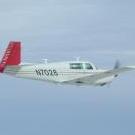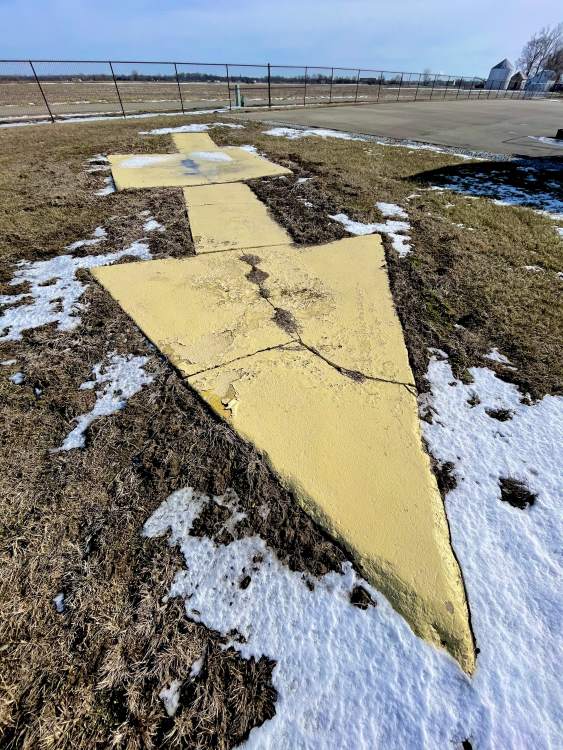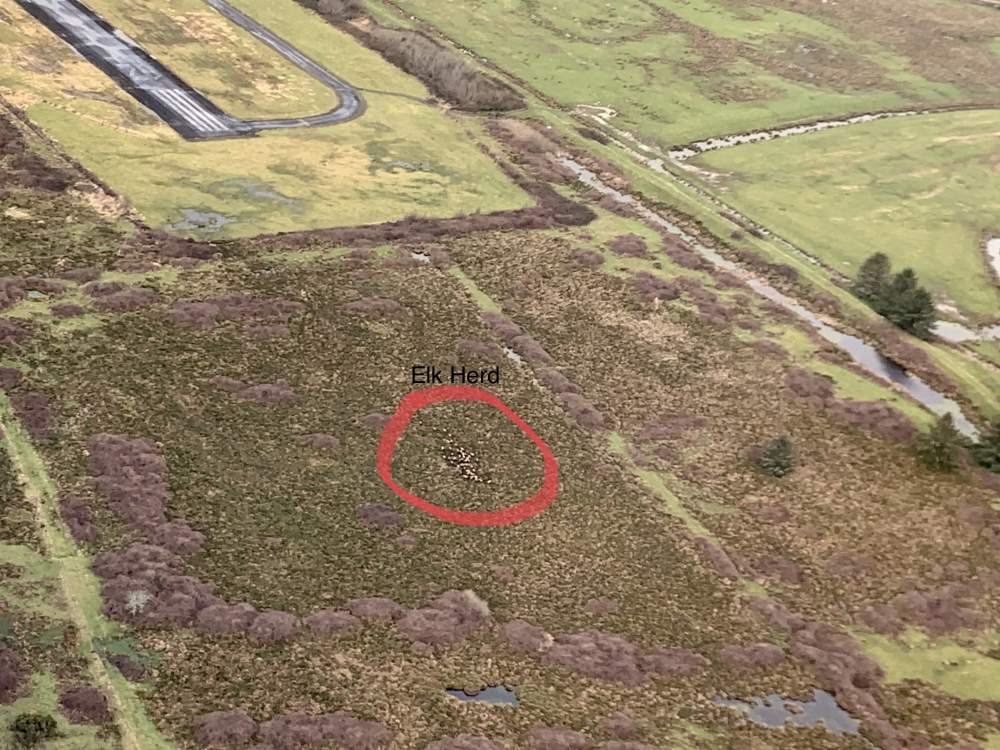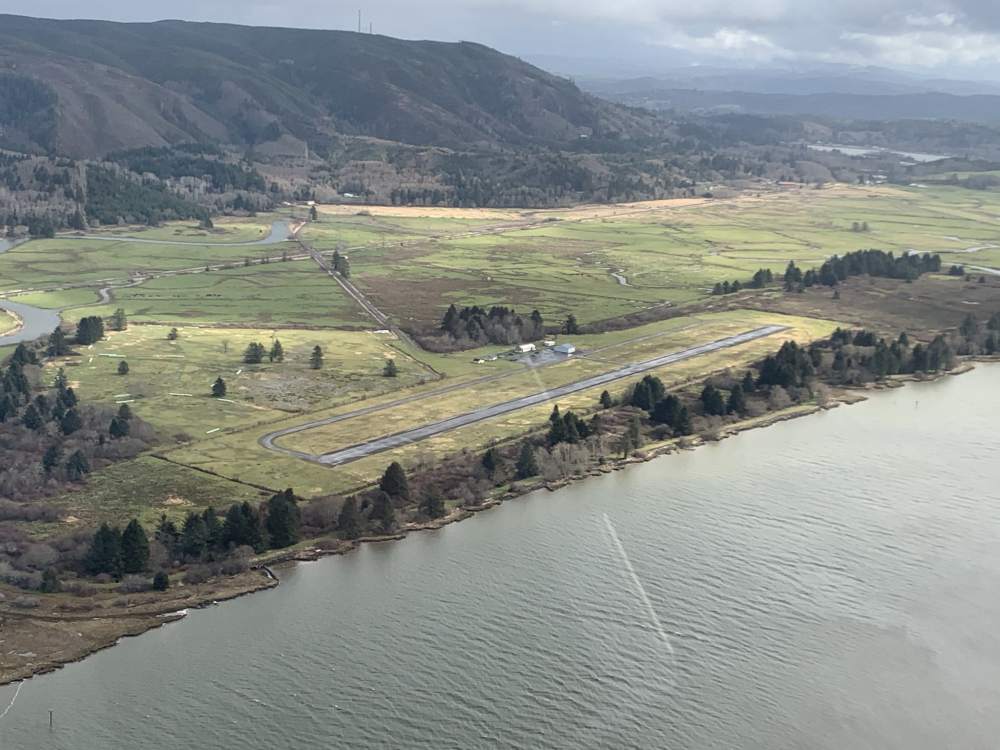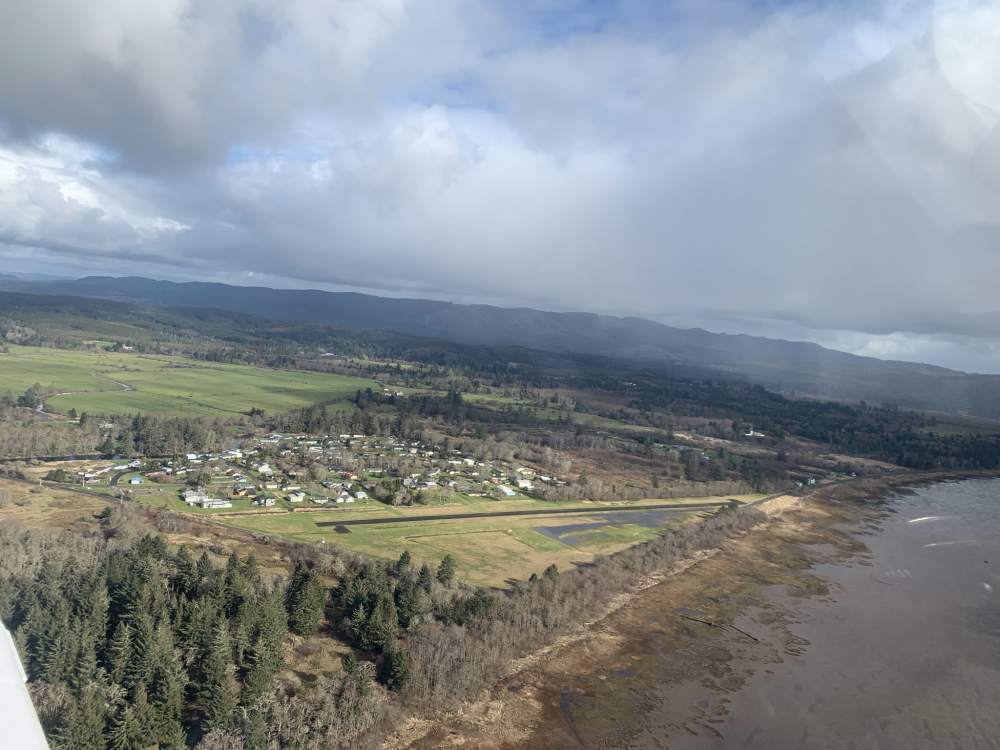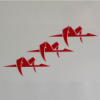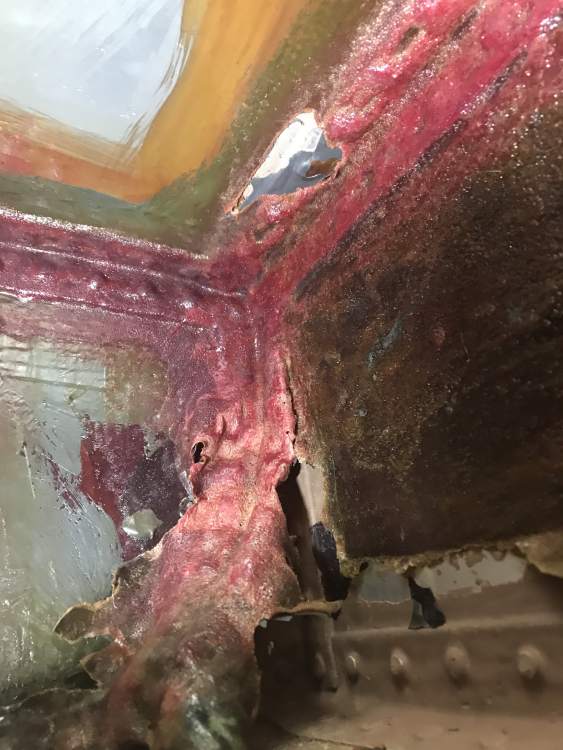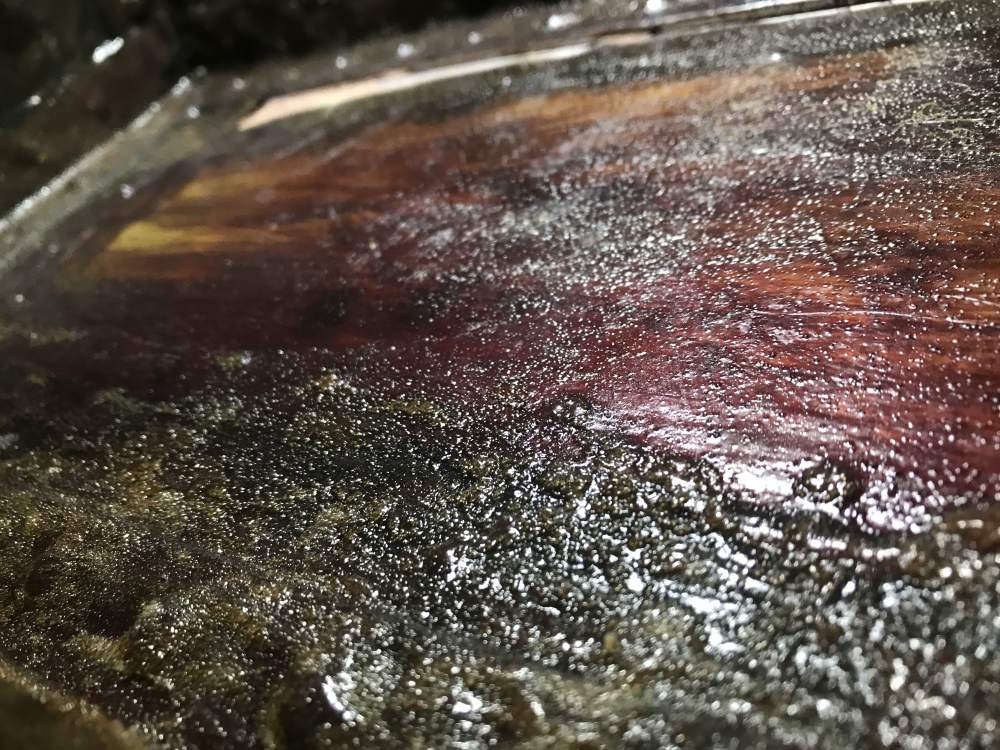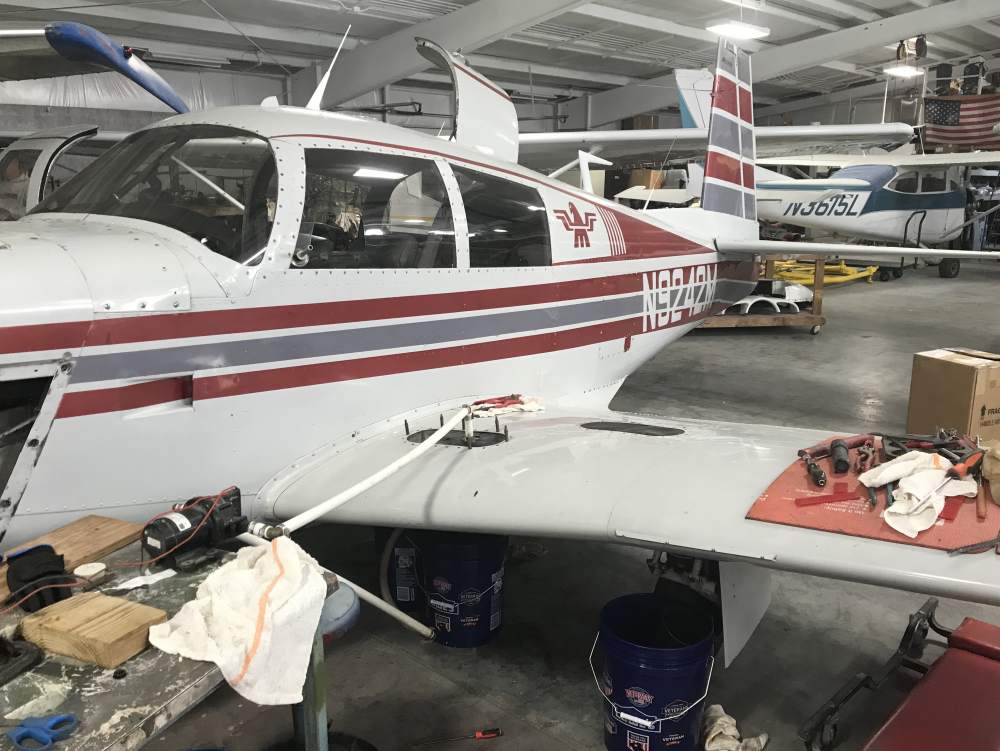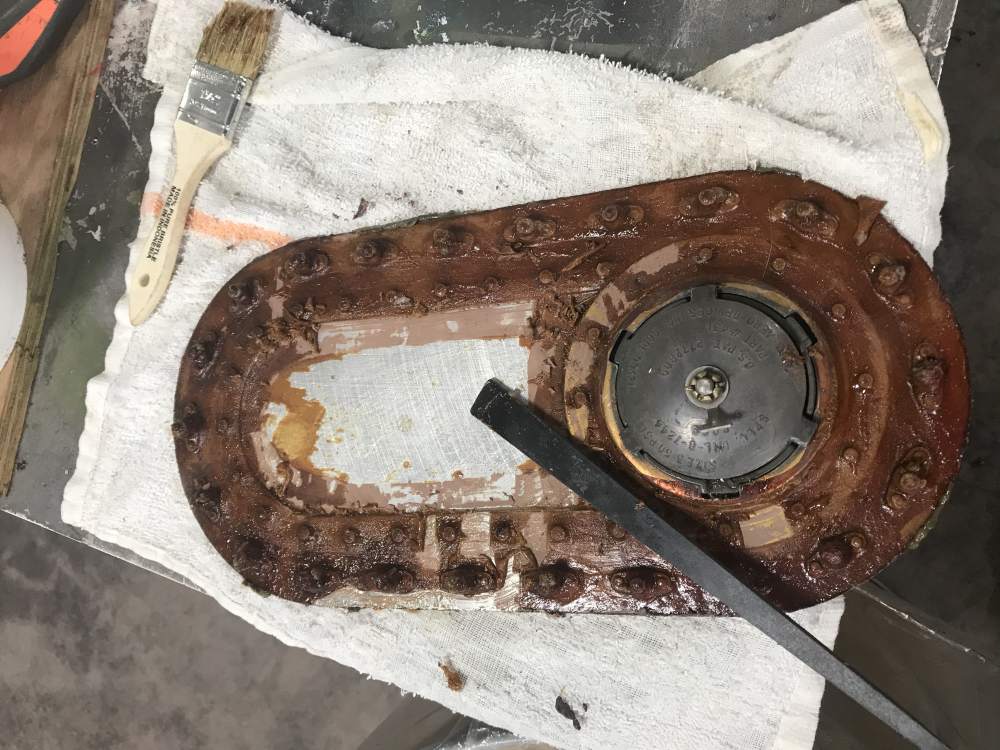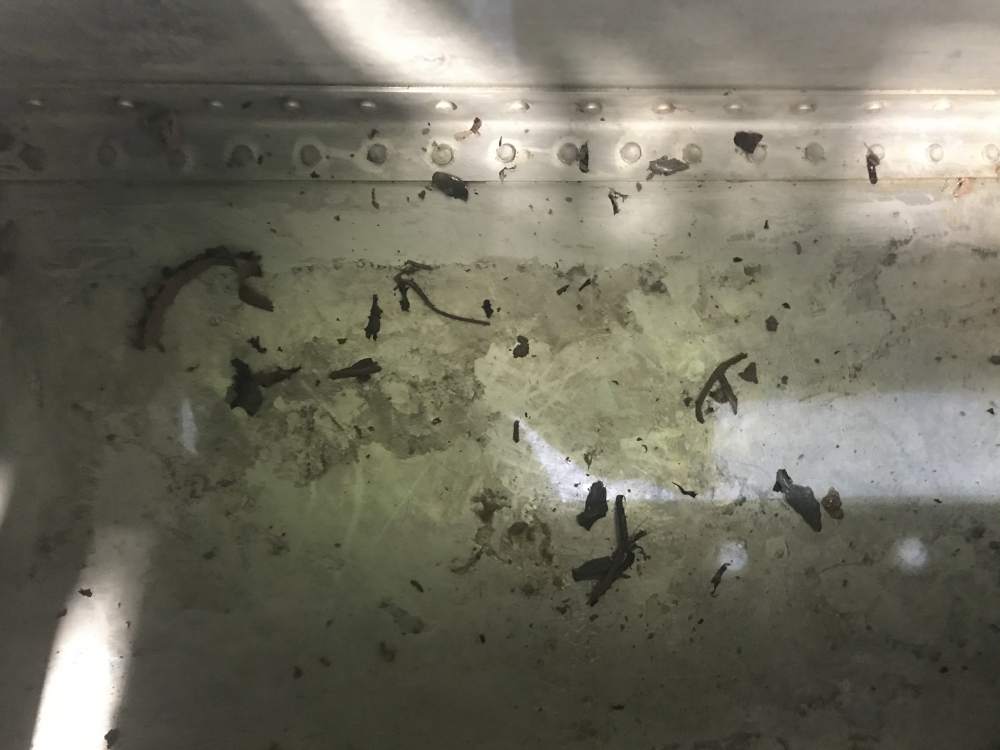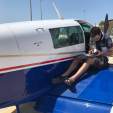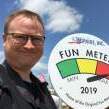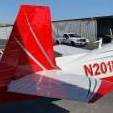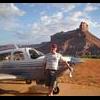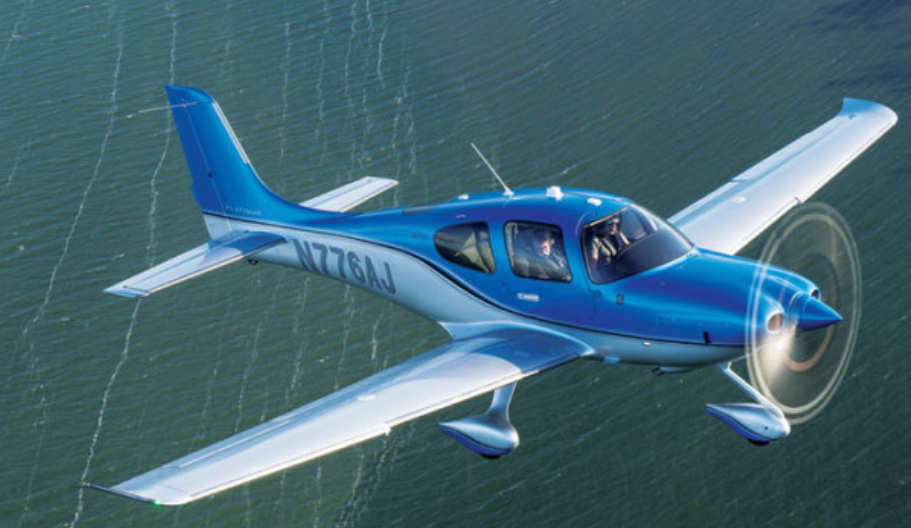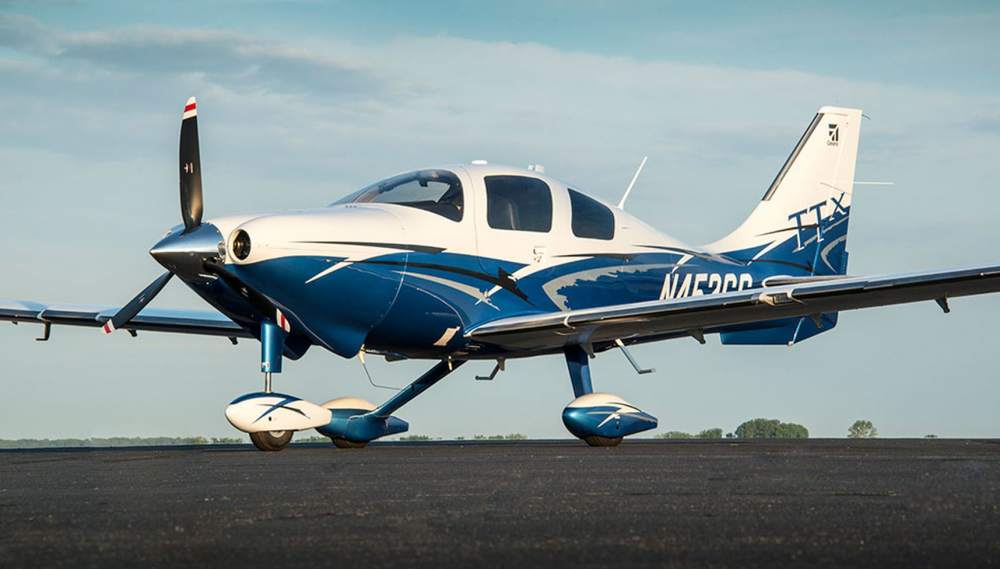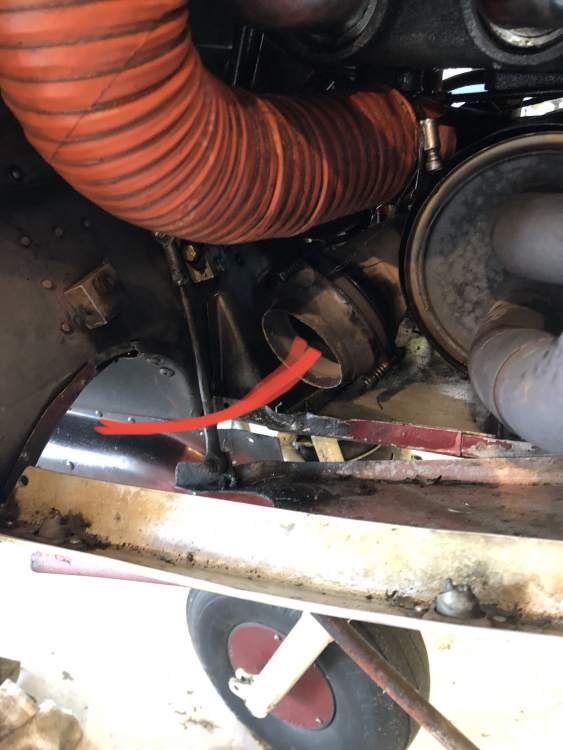Leaderboard
Popular Content
Showing content with the highest reputation on 02/08/2021 in all areas
-
6 points
-
Be nice to everyone... You never know who is holding the keys to your next challenge’s solution... Or who will be available to give you a lift to get your plane... Or who knows the answer to tomorrow’s question... Or who has an extra chair at Friar Tuck’s during KOSH... Or who will fly right seat while you figure out what is going on in the left... Or who has seen a spot like this... Or who has the answer to.... I’m stuck in X, where do I find a Y..? Take the time to discuss... what worked for you, and why... We are all very different, with some really strong common interests... Time flys at Mooney speeds... There are some really cool opportunities to be found while flying a Mooney... go there... Best regards, -a-5 points
-
A friendship/relationship with a good Mooney shop. The engine monitor is the most important instrument in my panel. Fly a lot. The more hours the better. The airplane needs to fly as much as the pilot does. So if you're not flying, toss the keys to someone who will fly it. Don't let the Mooney sit. Every one of those will increase safety and reduce costs. And those are the two things that reduce the pilot population more than anything.4 points
-
Wow!!! Wow wow wow! Stratofortress, Lancer, and Spirit! That is some major fire power! “But the history-making started with the flyover that took place over Raymond James Stadium before kickoff. Three different Air Force bombers conducted a first-of-its-kind trifecta flyover during the National Anthem. The bombers included a B-1B Lancer from Ellsworth Air Force Base in South Dakota, a B-2 Spirit from Whiteman AFB in Missouri and a B-52 Stratofortress from Minot AFB in North Dakota. The significance? If you add B52 + B2 + B1, you get 55 – in honor of Super Bowl LV. The aircraft took off from their respective bases and joined up for the flyover. They will now return to base. The Air Force says this “demonstrates the flexibility of AFGSC’s bombers and their ability to deploy anywhere in the world from the continental United States.” https://www.wfla.com/sports/the-big-game/gallery-air-force-bombers-make-history-with-trifecta-flyover-at-super-bowl-lv/ https://www.wfla.com/sports/the-big-game/watch-live-before-kickoff-first-ever-trifecta-flyover-happening-ahead-of-super-bowl-lv-in-tampa/?fbclid=IwAR3YG7hC_BPPh0L2khaakt24RB1Kbiasca1G5yBInRJ-hRzvYH6FlZMp3Jo3 points
-
Yeah... sorta. A student-oriented check list does have items that aren't necessary for an experienced pilot. For example, "TAIL - INSPECT" is adequate for an owner's preflight checklist, but a student checklist typically breaks out the individual surfaces and/or linkages. That said, the preflight checklists I write just say "INSPECT" for these items, regardless of how they're broken out, so a student is going to have to ask me what exactly they're supposed to look for, until they absorb how the system they're inspecting actually works. Similarly, I write "MIXTURE - SET FOR TAKEOFF" for students (and myself), rather than spelling out how to set the mixture. To me, that's one important difference between a "Check" list and a "Do" list. A pilot using a checklist should know how to check/do things based on their systems knowledge. The checklist is just a safeguard against tactical mental lapses. Fortunately, this philosophy is synergistic with multiple goals. Avoiding prescriptive details keeps checklists short and tidy, which in turn reduces the risk of skipping items. And as a CFI, the way a student works through such a checklist gives me a pretty good idea of their level of understanding of the systems they're checking/operating.3 points
-
My last post was in the classifieds section after our Ovation found a new home. A couple of folks asked what was next so here goes. As of late October, I have been working on getting used to flying a Baron 58. We looked at several 1980's legacy examples with the intention of converting to a Garmin panel but ended up connecting with this one by chance. It was newer and already had most of the avionics work we were looking for done. We completed the purchase in the summer of 2020 and then spent several months working on a little optional overhaul work, fixing cosmetics, and frustratingly, dealing with some significant deficiencies in the avionics install work that had not shown up in our pre-buy. As has often been said in this forum, buyer beware... just because a shop may hold prestigious dealership status for one manufacturer or another does not mean that the work they are doing necessarily meets the standards one would expect. Ultimately, we got the plane to the condition you see here and to say the least…I am a happy boy. Kudos to Clarence (M20Doc) and the folks at TriCity for their relentless attention to detail, depth of knowledge about fixing / maintaining aircraft, and enthusiasm. Thanks also, to Jasper and the lads at Mid-Canada Mods, for getting the avionics where they needed to be. I started flying the Baron in the Fall, and today marks my first 100 hours in the plane. I already had a MEL rating (thanks, Stu!), and with the help of my Mooney CFI, who also happens to teach in Barons full time, the transition went smoothly (thanks, Dave). I am still fine-tuning things and fly duel often, but my MIFR went well (thanks, Ed), and as you can see, I am starting to stretch the Barons' legs now. I kept the tail number, it's vain yes but I kind of like flying C-FUTR (See Future) and, with the help of those I have mentioned, a cast of many others who encouraged me (you meet the nicest people in aviation) and last but by no means least, my better half (couldn't have done it without you C!) I have arrived at and am flying in the future I had been aspiring to. Be well, everyone, fly safe….PS..yes, I miss the Ovation.3 points
-
I’m really surprised that no one has mentioned that Mooney’s have the tail on the correct way. We all know that’s why they are more efficient. Sent from my iPhone using Tapatalk3 points
-
Mine is not mooney specific... definitely buy a roller board and clean the belly often. You’ll grow accustomed to the exhaust color and oil splatter down the fuselage. Changes are always worth investigating. Amazing how much better look you get at the brakes, gear wells, and nose gear steering when you’re cleaning them vs “preflighting”.3 points
-
Setting aside my own mistakes (which are many), let me give a CFI perspective on this. I've watched dozens of students miss dozens of items on checklists. In every single case, I'm able to identify something about the checklist itself which contributes to the error. So one possible snarky reply to "How many times have you missed a step on the check list?" is, "Never, with a well-designed checklist". That's not really a true statement, of course. But if you're going to pooh-pooh checklists, pointing out the foibles of a poorly-designed one is kind of a strawman argument. I actually wrote a short treatise on checklist design for a CFI candidate recently, pasted below for your consideration. First, good checklists are audience-specific: e.g. items that are helpful to a renter student pilot are distracting to an experienced owner, and vice-versa. One-size-fits-all would be simpler, and I used to think I could teach new student pilots to just grow into the kind of lightweight, streamlined checklist owners prefer. But experience has taught me differently, and given me an appreciation for the compromises made by people who write factory POH checklists. So... the checklist I give to a pre-solo student for a Cessna will work well for them, but be totally bloated for a Cessna owner; but that's fine - there isn't going to be a single checklist that works best for everyone. As an example, my normal procedures checklist for students has an item for "Taxi to Departure Runway". This is a stupidly obvious action for anyone with even a few flights under their belt, and I didn't have it there initially. But I've had no less than three different greenhorn students try to start performing pre-takeoff and runup checks while idling on the ramp, because they lack the context and experience to understand/remember that those checks are done from the run-up area. Adding an item for taxi provides an obvious, helpful separator. Second, while my student checklist is geared toward students, it still avoids detailed, prescriptive actions. e.g. it says, "Prime as needed", rather than, "Prime 3 strokes in cold weather, 1-2 strokes in warm weather, not at all if engine was recently shut down". This makes the checklist more compact, which helps avoid skipping things (see below). But it also forces students to learn the nuances of and purposes behind various actions, rather than performing them mindlessly. To put it in FAA terms, I am trying to ensure they quickly move from the rote level of learning, through understanding, to application. The end goal is for them to use checklists as actual *check* lists, rather than *do* lists. Failing to understand this is a mistake I made when I first started creating custom checklists, and that I see repeated by others - especially mid-time pilots transitioning to new aircraft. It's tempting to fill your custom checklists full of prescriptive details, but doing so winds up creating more problems than it solves. Finally, the most serious and most common checklist mistake I see students (and experienced pilots) make, is simply skipping an item outright, without realizing they've done so. Sometimes it's just an inexplicable brain fart (myself included). But I've observed a couple of specific issues caused by the design of the checklist itself, and my checklists try to avoid those: 1) Adjacent items that look almost the same are prone to getting skipped. Consider a checklist that says: Lighting - ON Headsets - ON Avionics - ON ... vs. one that says: Lights - AS DESIRED Headsets - ON Avionics - ALL ON At first glance it seems like there's no meaningful difference between these, but each line of the lower one is distinctly, visually different. Whether you're using your finger or your eyeballs or both to track to the next item, you're more likely to skip an item in the first case. This is analogous to how some old airplanes have switches that all look alike, while newer ones have distinctive shapes for landing gear, flaps, etc. Some of the wording in my checklists is designed to provide this sort of visual distinction. 2) You can teach students to use a finger or thumb as a checklist place holder to avoid skipping items, but only if the checklist mechanically supports doing so. A few checklist operations require both hands, so there is no perfect solution. But you can't thumb-track the checklist at all, if it's a big, multi-page and/or multi-column monstrosity. So within bounds of reason regarding eyesight, smaller is better, and that's why my checklists use a "long and skinny" format. 3) The more pages a checklist has, the longer it takes to find the section you care about (especially in an emergency); and the cardinal sin is a checklist that requires you to turn pages in the middle of a single sequence. For example, a lot of flight school 172s have laminated copies of the POH procedures pages in the map pocket, bound with a ring. The POH checklists themselves are fine, but the ring-bound "flip book" is unwieldy, and I've lost track of how many times I've seen a student skip items in the BEFORE TAKEOFF list because it spans two pages. For whatever reason, turning the page causes them to blow past items at the end of the preceding page and/or the beginning of the next page; and they'll often keep making that mistake even after multiple corrections. So again within bounds of reason regarding eyesight, smaller/fewer pages is better, and this is another reason for my "long and skinny" format. In summary, the whole point of having a checklist is to ensure every item on it gets checked, so anything you can do to minimize the chance of skipping items is valuable. The ergonomics of the checklist are at least as important - and maybe moreso - than what items you actually put on the list.3 points
-
Stay humble. No matter how long you've flown or how many airframes you still don't know everything.3 points
-
I live near a now defunct AFB. Plattsburgh. There used to be an airport named Clinton County about 3 mi away. An F111 pilot landed at Clinton county instead of the AFB. He got out and walked down the street to use a pay phone to call the AFB and tell them where he was. He said he thought the runway looked a little short. They had to take the wings off and tow it back to the AFB. It happens to the best. Good practices aren’t something you will always find in a manual but everything found in a manual are good practices which are there because of someone else’s mistakes. Doesn’t matter what you fly. I don’t want to become a cautionary tale.2 points
-
The problem I have with this and other mnemonics is they should only have critical items that could be forgotten, there are certain things you don’t forget or you don’t need and don’t need a mnemonic to remember: Do the Runup or turn on the strobes? Time when in position or turning on the landing lights ? Has anyone ever died because they didn’t record the departure time? Get the weather on approach ? Pitch up for a go around ...you seriously need a checklist item for that? Pull mixture to shutdown the engine or turn off the mags (this would mean forgetting the keys or leaving the engine running when you get out)2 points
-
I have to use the checklist for engine start on multi’s, or else I forget to turn on the mags.2 points
-
This. As far as cleaning, I ended up getting the softest steel wool available, dousing it in a WD40-like substance (so the steel wool is almost dripping wet) and giving both yoke shafts a few gentle rubs from one end to the other of the section that goes through the eyelet. I still have the replacement eyelets I ordered on the shelf. Edited to give credit where it is due: FYI, the recommendation for steel wool and WD40 suggestion came from Dan at LASAR; he also recommended wiping it all down with silicone sprayed into a rag.2 points
-
Lol....... Looked like Jock Straps on their faces. By far the worst Halftime show I have ever seen2 points
-
2 points
-
2 points
-
Participate in an annual. Do a E gear extension on the jacks Don't forget to have fun.2 points
-
Don’t just check the yoke shafts. Actually clean them. @donkaye is probably the most experienced Mooney pilot on this site. His yokes (also M20M, BTW) felt perfectly normal to him but his GFC500 was exhibiting the exact same problem you’re describing. Not sure his method for cleaning his, but a good start would be silicone spray lubricant applied to the shaft and wiped clean. Apply more and move the yokes in and out, and wipe clean again. Repeat a few times and go for a test flight. Good luck, please keep us posted.2 points
-
I would use a multimeter in ammeter mode, it can read milliamperes which would not be enough to light the bulb.2 points
-
2 points
-
History books will have a chapter about the energy age just as the bronze and iron ages. They will marvel at how we squandered it with things like airplanes. But in the mean time, where can i get cheap avgas?2 points
-
I need. to be checked out in M20J. I need 3 hours from a CFI that has Mooney experience. I live in Melbourne Fl1 point
-
Didn't go flying today. Beautiful weather, but cold. Had to move a few inches of ice built up in front of the hangar. Were it warmer I probably would have. Had I a passenger to go somewhere I probably would have. Had I somewhere to go, I probably would have. But just to go up by myself to do some landings, it was just too much. Bought a bottle of booze instead.1 point
-
I created this mnemonic myself back when I was doing a lot of instrument instruction. You would be surprised how many add power and then, I guess because the engine is making lots of noise, forget setting pitch for climb and trimming before doing other items associated with the missed approach. Skip1 point
-
If it happens at the exact moment you touch down, perhaps there is a frayed wire in there somewhere, causing a short; or, on a different axis, could it be related to deceleration? Would it pop if you pull the throttle without landing, say for descent? Would it pop on a rapid deceleration in flight (pushing the prop full forward from pulled way back)?1 point
-
Com'on man it is a hardware only solution. In a very dynamic environment I might add.1 point
-
1 point
-
I doubt that E85 or even E15 will ever be used in aviation fuel. I would be surprised. There’s a myriad of issues. I’m in the boat business, we make a nice living on fuel systems trying to endure the E15. We see around 1500 boats per year and I reckon around 20% are fuel related. Firstly, it attracts water, secondly, it’s shelf life is limited. Aircraft, like boats are known for extended periods of non use. Unless they have some magic I don’t know about, to extend life span, I can’t see that working out. And what about the lead? How they gonna work that out? as for the high compression pistons in this airplane, I enjoy a little more output about anywhere, but it comes in handy at higher altitudes. Along with the power flow exhaust system, the little engine works well in this configuration. Sips gas. My best buddy has a c182 and I can take off behind him, reach 12,000’ before he can... not by much, but...and then, I’m off to the races, in another few minutes, I’m in another zip code. Granted, a 182 isn’t a racehorse, but it climbs pretty well and it’s a fuel gobbler. You gotta pay for all that cabin space and parasite drag. He always complains about the lack of shoulder room... but he admits the Mooney is an efficient platform. When we fly to dinner together, and the ship gets in stride, I’ll look over at him with a grin and I usually get the nod. He calls it the magical Mooney. talk about hi jacking a thread... sorry.1 point
-
1 point
-
Indeed anytime I am flying with someone with a long prescriptive checklist, I just curiously ask how they can start the engine without paper checklist (just tell me the steps) or do few crucial items from memory under time pressure (if engine suddenly stops in the air and one wants to catch it quickly there are 3 things to look for fuel & air & ignition, 3 not 20, the red pages of checklist may come later) Anyone should be able to fly safely with memory without exhaustive “to-do list” or “checklist” including few slips, having plenty of time while flying is both a luxury & constraint, a long paper refresher is also good from time to time, but the hardest bit is always prioritising between important items, urgent items, nice to have and reminders on how to do them ! When flying with other pilots, it obvious how many items gets skipped in paper checklists and catched latter by memory of suprise, it's the reality of single pilot flying The one place where I believe a detailed paper checklist and mental one needs to match while having sterile cockpit is pre-takeoff, maybe doing both by memory & paper as it helps getting in the pilot shoes and mentally ready for flying, before takeoff one has plenty of time to get ready and the next few seconds of action are not very forgiving to getting some items wrong...1 point
-
I was highly impressed by their timing... The singing stopped... the birds flew overhead, center stage... Timing within seconds... Nicely done gents/people! Who directs the whole show with that level of accuracy? Just wondering... Best regards, -a-1 point
-
But before you lose a GI275 you have to lose the alternator, then run the ships battery dead, then run the GI275 battery dead. Hopefully you be on the ground by then, or at least VMC.1 point
-
At least you didn't say it was the halftime show . . . . I hear there are no Fruit of the Looms available in central Florida.1 point
-
You're welcome. It was late and I was too tired to bust out the technicalities of the AC, so I just went quick and dirty with the URL.1 point
-
1 point
-
What finally fixed it was putting a filter on the ELT. Someone here suggested it and never had the problem again.1 point
-
I don't have a Bravo I have a 231, so I won't venture into power settings, but there was one interesting phenomenon, mainly with Lazy 8's, caused by the slickness of the airframe. On the descent side of the Lazy 8 you can't just push the nose over and dive, which is the advice you will read alot on the internet. That might work with a Piper or Cessna, but the Mooney airframe picks up too much speed and you will bust your speed limit at the bottom. You might be over speed but within limits on the first Lazy 8, but you will bust speed on the second or third. Instead, you have to let the airframe fall, it is somewhere between a nose over dive and a stall attitude. There is a distinct change in the noise, you can hear the wind rush as the airframe falls. Best to find a really good instructor who can show it to you.1 point
-
Often, around here... on other AP models... 1) altitude variations with increasing sinusoids... are the control system fighting something that isn’t right... like... 2) Bad static input... some people have a rubber hose attached to the static system, connected to the AP... the rubber hose goes bad... essentially leaves the AP getting bad static information from inside the cockpit... Consider checking what line is connected to the back of the AP, and is it leak free... a good static system check may be an easy route to check this too... 3) Bad servos... the attitude servo gets used a lot. Some use a clutch that has a tendency to wear... the wear in the system is out of tune with the controller... the older response time of the BK APs starts showing with increasing porpoise... An example of really odd responses... find a clutch that got CorrosionX on it... So... 4) What happens when... the plane begins to porpoise, the pilot manually stops the porpoise... reengages altitude hold, or VS climb... how long before the uncontrolled behavior begins again? 5) Was there any re-used servos part of the install? 6) Since the attitude Servo and trim Servo can be capable of masking each other... check both... 7) Ever want to mount a camera in the tail to watch over the two servos back there? 8) Expect that it could be anything including a dirty wire connector... a good visual inspection in the tail is easy... 9) Visual inspection behind the panel... not so easy... Good luck with the next step... PP thoughts only, not a mechanic... Best regards, -a- In the end... the modern GFC should be able to hold a steady climb, or altitude without wandering... it’s computer speeds are incredible quick compared to anything that came before them...1 point
-
1 point
-
1 point
-
1 point
-
Are you taking a nuclear strip and reseal or a routine patch? The bible https://web.archive.org/web/20190103195252/http://donmaxwell.com/fuel-tank-repairs-how-we-fix-them/1 point
-
Or, when you decide not to adhere to VASI or PAPI, make sure your blades are nice and sharp!!1 point
-
Find someone who specializes in that....you'll be glad you did. Some things need to be done by the people that do what they do. Not saying it can't be done, just saying that if you like yourself even a little bit, you wouldn't put yourself through it. Had mine done by Paul at Weep-no-more. Glad I did. Not cheap to have done, but when it's done right, problems are solved. Only my opinion....Good luck.1 point
-
Knisley repaired the exhaust tube on my C a few years ago when the seam in the tube started to split. By reusing the flange it was classified as a repair, not a new part. Send them your flange and it will be better than new. Any MSC can sell you the hardware, tube clamp, and exhaust hangar springs (or did you have a belt style hangar?). Loewen Mooney Salvage might have what you need, including the exhaust tube, if you want to go that route. https://www.loewensmooneysalvage.com/1 point
-
If you mean "traditional", standalone turn coordinators, sure. But to be clear, IFR flight requires a rate-of-turn indicator per 91.205 (except for a few exotic corner cases with three attitude indicators, one of which works through 360 degrees of pitch and roll). So you can't legally fly IFR unless something in your panel is certified as a primary rate-of-turn indicator. The G5 is certified as a primary rate-of-turn indicator, I'd bet at least a dollar that the GI-275 is too. VSI instrumentation is not required for any kind of flight, VFR or IFR.1 point
-
In older Mooneys with the spring bungee system on the elevator, the position of the trim wheel affects the neutral position of the yoke on the ground. Trimming full down moves the elevator down and the yoke close to the panel, making entry/egress a little easier. Newer Mooneys with bobweights naturally "fall" to full down elevator and yoke close to the panel regardless of trim setting.1 point
-
At least you can still fly with the 730 removed. That’s actually the main reason I went with the 730 instead of the stand-alone 930. (The other reason is that I’m also cheap.)1 point
-
Quote: tomcullen ..... As an interesting experiement, you can fly a Cherokee with a maximum aft CG and get more speed from the plane. The reason is that you require less trim in that condition, so the plane has less drag. ..... Dan, good explanation overall. But one correction or clarification because not everyone may understand your reference to less trim is meant as less lift. All airplanes will improve their performance at maximum aft CG due to less drag but not really less trim. The further the CG moves back the less downward lift the tail has to produce to main level or desired attitude. The less lift results in proportionately less induced drag as a byproduct of lift.1 point



